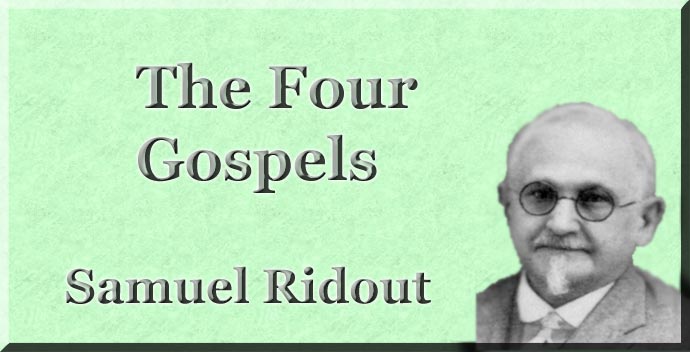
The Four Gospels
By Samuel Ridout
Table of Contents
|
|||||||||||||||||||||||||||
 |
 |
||||||||||||||||||||||||||
|
|
|||||||||||||||||||||||||||
Book Navigation
Title Page
Table of
Contents
Introduction
► Chapter 1
► Chapter 2
► Chapter 3
► Chapter 4
► Chapter 5
► Chapter 6
► Chapter 7
► Chapter 8
► Chapter 9
► Chapter
10
-
Site Navigation
 Home
Home What's New
What's New Bible
Bible Photos
Photos Hiking
Hiking E-Books
E-Books Genealogy
Genealogy Profile
Free Plug-ins You May Need
Profile
Free Plug-ins You May Need
 Get
Java
Get
Java.png) Get Flash
Get Flash Get
7-Zip
Get
7-Zip Get Acrobat Reader
Get Acrobat Reader Get
TheWORD
Get
TheWORD